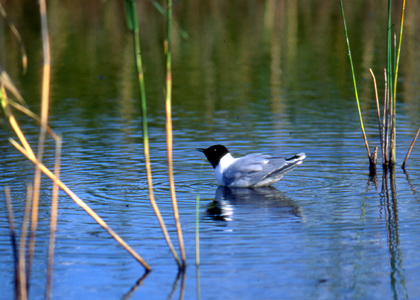 Compared to other aquatic ecosystems, only relatively few animal and plant species live in the brackish ecosystems of the Baltic Sea. Despite this limited biodiversity, the Baltic Sea is home to a unique mix of marine and freshwater species adapted to the brackish conditions, as well as a few true brackish-water species. Where salinity levels are low in the Baltic’s northern and eastern waters, fewer marine species can thrive, and marine habitats are dominated by freshwater species, especially in estuaries and coastal waters.
Compared to other aquatic ecosystems, only relatively few animal and plant species live in the brackish ecosystems of the Baltic Sea. Despite this limited biodiversity, the Baltic Sea is home to a unique mix of marine and freshwater species adapted to the brackish conditions, as well as a few true brackish-water species. Where salinity levels are low in the Baltic’s northern and eastern waters, fewer marine species can thrive, and marine habitats are dominated by freshwater species, especially in estuaries and coastal waters.
But the limited number of species involved in Baltic Sea food webs means that each individual species has a special importance in terms of the structure and dynamics of the whole ecosystem. The disappearance of a single key-species could destroy the functioning of the whole system. Such ecosystems are considered to be very vulnerable to external disturbances.
Baltic Sea habitats and species are threatened by eutrophication, elevated amounts of hazardous substances entering the sea as a result of long-lasting human activities in the surrounding catchment area and at sea. In addition, biodiversity is affected by socio-economic activities such as fishing and shipping.
Habitats and biodiversity at risk
One sure sign of the success of HELCOM’s environmental programmes and nature conservation measures is the steady increase over recent decades in the breeding success rates of top predators such as the white-tailed eagle and the Baltic’s three seal species. But these species still face health problems, with sterility levels high among young ringed seals, other pollution-related disorders evidently increasing in grey seals, and harbour seal population again suffering from the Seal Distemper Epidemic in 2002.
The vast majority of the marine and coastal biotopes around the Baltic Sea are to some degree threatened, and many of them are important for rare or endangered species.
Invasive species pose an increasing threat to ecosystems and the region’s biodiversity.
The network of marine and coastal Baltic Sea Protected Areas is still not fully implemented. In many cases the Contracting Parties have not yet managed to demarcate Baltic Sea Protected Areas (BSPAs) or prepare management plans, and few concrete steps have been taken to include the 24 proposed offshore BSPAs in the network.


